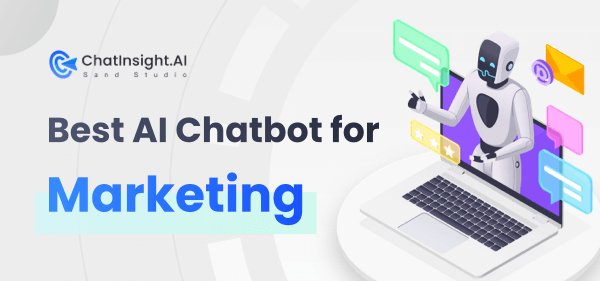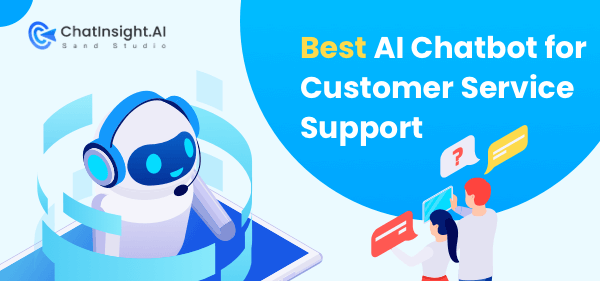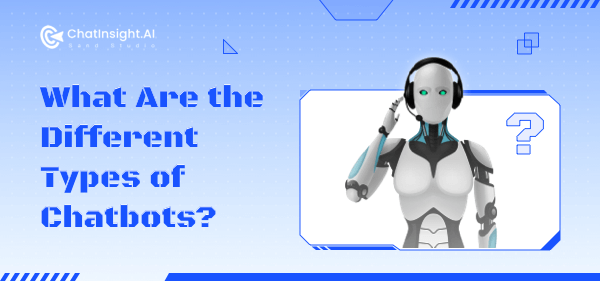Rule-Based Chatbots Vs. AI Chatbots: Key Differences to Know
When was the last time you read that AI-based chatbots will take over human minds? The headlines are everywhere as soon as the latest technology services. As a modern-day customer, you must have sufficient knowledge about Chatbot rule based vs AI technology. Here is everything you need to know without further ado. Let’s start the conversation with a history lesson.
1The History and Evolution of Chatbots
The term “chatbot” is widely used now. However, the concept did not exist at the time when web developers were figuring out a way to talk to websites. The intended for the computers to interact with the human beings. The first chatbot was developed before the personal computers were launched.
It was called Eliza. The chatbot was developed by Joseph Weizenbaum in 1966. MIT Artificial Intelligence Laboratory introduced it. Eliza operated based on keywords, which was its primary input. Its results were produced by the chatbot’s pre-defined sets of rules. A handful of chatbots still use the same methodology today.
In the next line of chatbots, let us introduce Parry. The chatbot was developed at Standford University thanks to psychiatrist Kenneth Colby. Parry was a by-product of treating a patient with paranoid schizophrenia. A.L.I.C.E was developed in 1995. It was created by Richard Wallace, who was a Leobner Prize winner three times. However, A.L.I.C.E did not pass the Turing test, which decides if the machine can operate independently like a human.
After these three chatbot launches, many virtual assistants were introduced to provide ease to the customers. Siri was Apple’s first chatbot with conversational technology. Siri became popular very quickly. When Google was launched, the famous search engine launched Google Assistant. However, it is reserved for Android users. Similarly, Microsoft also introduced Cortana.
As technology developed, chatbots started coming in the form of smart speakers. They operate with the user with the help of voice commands. A human being can easily chatbot with a virtual assistant like it is talking to a fellow friend. Common examples of smart speakers are Alexa from Amazon and Google Home.
Some argue the introduction of chatbots by Google, Apple, or Microsoft was inspired by Hollywood movies. JARVIS was a famous chatbot that was developed by Tony Stark in Iron Man. It meant Just A Rather Very Intelligent System. The chatbot was quite smart. Furthermore, it was self-aware of its actions and the implications of its decision. When it was connected to the global interface, JARVIS communicated with holograms. Tony Stark was able to access the information he needed with a simple voice command.
Even though Tony’s JARVIS was a movie character, Mark Zuckerberg brought it to life. Facebook’s owner created and manufactured his version of the chatbot from Iron Man. It was a personal virtual assistant who was responsible for managing domestic matters at Mark’s house.
2What are Rule-based chatbots?
A rule-based chatbot maps out a conversation to decide how a query proceeds. It is based on the assumption related to the user. However, a rule-based chatbot will not ask questions because it is outside of its decision tree. Their performance is severely limited to the scenarios the client trains them in.
The simplest way the rule-based chatbots work is with a decision tree. The concept is crucial in understanding the chatbot rule based vs AI technology use cases. Rule-based chatbots are very common. You may have interacted with them knowing, too, such as a live chat on different websites. Rule-based chatbots are common on social media profiles as well.
The rule-based chatbots use if/then flowcharts. Unfortunately, they do not comprehend human emotions or intent. The query moves forward according to the flowchart. The chatbot will predict the customer’s query and the subsequent program as well. For a successful rule-based chatbot, it must have logical steps connected to a call-to-action.
Companies that hire rule-based chatbots answer simple queries. They will transfer the query to a live agent to extend the conversation. The chatbots do not learn or adapt new features. They will not become smarter throughout their use. You can build a rule-based chatbot with simple or complicated instructions.
3What are AI chatbots?
Before we move forward with the rule based chatbot vs AI chatbot argument, it is necessary to learn the latter’s definition. AI-based chatbots have special features that understand human language in written and spoken forms. The Natural Language Processing model is embedded in its algorithm for interpretation.
As a result, the chatbot will identify the customer’s intent correctly. The buyer is pleased with the responses because they are accurate. AI chatbots can be excellent at problem-solving and engaging conversations. They are creative and witty and do not need constant supervision for reasoning. When an AI-based chatbot discovers a highly complicated issue, it transfers the query to a human staff member.
Machine Learning
Machine learning is a subset of artificial intelligence. However, it also includes elements from computer science. Machine learning focuses on the efficient use of data. The actions are based on an algorithm that is constantly evolving. Machine learning aims to perform just like a human while improving its accuracy.
Natural Language Processing
Natural Language Processing combines rule-based algorithms with machine learning. The technology allows computers to comprehend and analyze human language. The input data can be in the form of text or voice. Natural Language Processing is unlocking its rising potential in different industries. It results in better employee productivity and efficiency in business operations.
4Advantages of AI chatbotsHigh return on investment
Chatbots with AI algorithms improve the return on investment. This is because the chatbot offers several features that the rule-based chatbot does not. Chatbots with AI algorithms recommend products during a live chat. It will study the database. Furthermore, the chatbot will upsell and cross-sell products as well. It reduces abandoned cart syndrome as well.
Multitasking
Chatbots will handle numerous tasks at the same time. It will manage and organize customer data very well. Many websites will spend large funds on managing customer relationships. However, it can be done with an AI-based chatbot. The embedded feature will identify leads and translate them into sales.
Accurate answers
Chat with an AI-based algorithm is excellent at guiding customers through the sales funnel. Its knowledge base is trained with relevant questions that the buyer asks frequently. If the chatbot does not have a relevant answer, it will transfer the query to a live agent. As a result, it increases brand awareness in the market.
Handling complex issues
AI-based chatbots will handle complex queries. It is made possible by the machine learning technology. The AI algorithm identifies user intent without any interruptions. Moreover, the algorithm will reduce the obstacles to increase sales. You can use the chatbot to schedule live chats and meetings. The customers can inquire about product use without feeling judged as well.
5Disadvantages of AI-based chatbots
Expensive
Secondly, chatbots with AI algorithms are more expensive than rule-based chatbots. Training a chatbot to mimic human-like conversation is costly. The client may also need to purchase additional resources for better results. Moreover, the chatbot is expensive to train as usage extends to lead generation, support, and commerce.
Time-consuming
Unfortunately, that chatbots that use AI are very time-consuming to train. The client must train the chatbot with each conversation and intent. In addition, the client must also test the algorithm. If a client is unaware of machine learning, it leads to more frustration. It can lead to misinterpretation and misinformation about the products.
6Key Differences between rule-based and AI chatbots
| Category | AI-based chatbots | Rule-based chatbots |
|---|---|---|
| Customer complexities | Excellent at solving complicated queries with an open-ended algorithm | Ideal for basic queries with predictable answers |
| Training and Development | Needs more time to develop and train | Develops and installs instantly |
| Data security and privacy | The client can train the AI chatbot with huge datasets. There are no risks to sensitive information. However, stronger security is necessary | The chatbots operate with controlled parameters and fewer amounts of datasets. There are low risks involved |
| Scalability | The chatbot scales its use according to the query and different scenarios | The chatbot does not extend use for complex queries |
| Tasks | AI-based chatbots complete tasks and interact with the user | Ideal for routine and standard tasks |
| Updates | Self-learns from data and improves. However, needs manual interference | Rule-based chatbots are updated manually according to new rules and scenarios |
| Budget | Expensive installation and training costs | Fewer resources are needed with cost-effective details |
Scalability and Adaptability
The rule-based queries need many contexts and entities to supervise queries. As a result, they will not scale up or improve. In other words, they are unable to learn and evolve in different scenarios. Each time the client wishes to scale a rule-based chatbot, they must enter a new pattern or a rule. The process gets frustrating over time.
In contrast, AI-based operates outside of its pre-defined rules. It uses artificial intelligence to learn and adapt to new scenarios. As a result, they are able to offer personalized services with relevant answers that rule-based chatbots cannot. Thus, chatbots with AI algorithm deliver a better buyer’s experience.
Comparison of functionality
Flexibility
When studying the Rule based chatbot vs AI chatbot argument, flexibility is an important element to consider. Rule-based chatbots are not very flexible because their input parameters are limited. It will answer basic queries. On the other hand, AI-based chatbots are very flexible. They do not need specific keywords to engage with the user.
Complexity
A rule-based chatbot is not complicated because it is programmed to answer basic questions. Unfortunately, they do not pick up clues from user interactions. They will study the input alongside pre-assigned options. However, AI-based chatbots are complex to train. The upside is they will analyze customer behavior based on previous chats.
User-experience
Customers find it easier to use AI-based chatbots because the algorithm constantly learns from the conversations. The chatbot streamlines user interaction for future growth. It results in innovation. On the other hand, rule-based chatbots are very tough to use. They will not address specific queries but rather provide generic answers.
Integration with other technologies and systems
You can easily integrate AI-based chatbots with other systems in the sales and marketing funnel. It makes the job a lot easier for the customers and vendors. You can add a chatbot to deliver quick answers such as WhatsApp and social media handles. However, you can only integrate a rule-based chatbot with the legacy system.
A rule-based chatbot does not evolve with the technology. Therefore, it cannot meet the client’s demands or expectations. They are incompatible with social media profiles or other instant applications. Yet, they are still very secure.
7AI Chatbots vs Rule-Based Chatbots: Which is Better for You?
When thinking about a chatbot, rule based vs AI argument forces businesses to think about its diverse use. They think of their needs and how it impacts their performance. The answer to rule based chatbot vs AI chatbot depends on the company's requirements. If your customers are pleased with the simple chatbots, then you can install them because of the low development expenses.
However, if you are seeking an advanced service with real-time answers, then AI-based chatbots are the way to go. They interact with the buyers based on conversation history. Moreover, the chatbots will analyze buyer’s behavior as well. These features are unavailable in rule-based chatbots.
AI-based chatbots are preferred for delivering personalized experiences. It will deduce user queries very well with the intention of understanding the conversations. The client can train the AI-based chatbots to discover intent. Subsequently, the chatbot offers relevant responses with the correct compositions. The technology is useful in collecting customer data that benefits the company in the long run.
You think of AI-based chatbots as sophisticated cousins of their previous models. The AI algorithm is useful for companies that need to store a huge volume of data. The companies usually operate on a wider scale. Furthermore, the AI-based chatbots can process large requests.
Another downside of AI-based chatbots is the cost. They are very expensive in terms of training and purchase. Furthermore, the client may need to invest in further resources to ensure a human-like conversation. However, you can opt for the rule-based chatbots if you are limited on funds. They are excellent for a small-scale company that can upgrade to AI use as they expand.
8Build an AI chatbot for your Business
chatinsight AI chatbot is an innovative chatbot that is designed to accommodate different niches. It uses the LLM model to offer accurate results. You can customize ChatInsight according to the knowledge base. The chatbot is available in multiple languages as well. You can embed it on the website or social media profiles. It works as a floating window, URL, or iframe. It is easy to train. The accurate responses reduce frustration. Lastly, ChatInsight is code-less. In other words, you do not need technical experience or algorithm knowledge to launch the chatbot. You can build it instantly to offer solutions.
In addition, ChatInsight does not compromise on data security. It will store IP and password details expertly. The data is not shared with third parties or other AI models.
Talk to Experts today!
Rule-based or AI-based chatbots will allow the brand to connect with the customers. Rule-based chatbots are excellent for simple queries. However, you can pick AI-based chatbots for lead generation and business insights. If you have limited knowledge about chatbots, contact the experts at ChatInsight today. You can embed ChatInsight into your website for a customer-focused approach.







Leave a Reply.